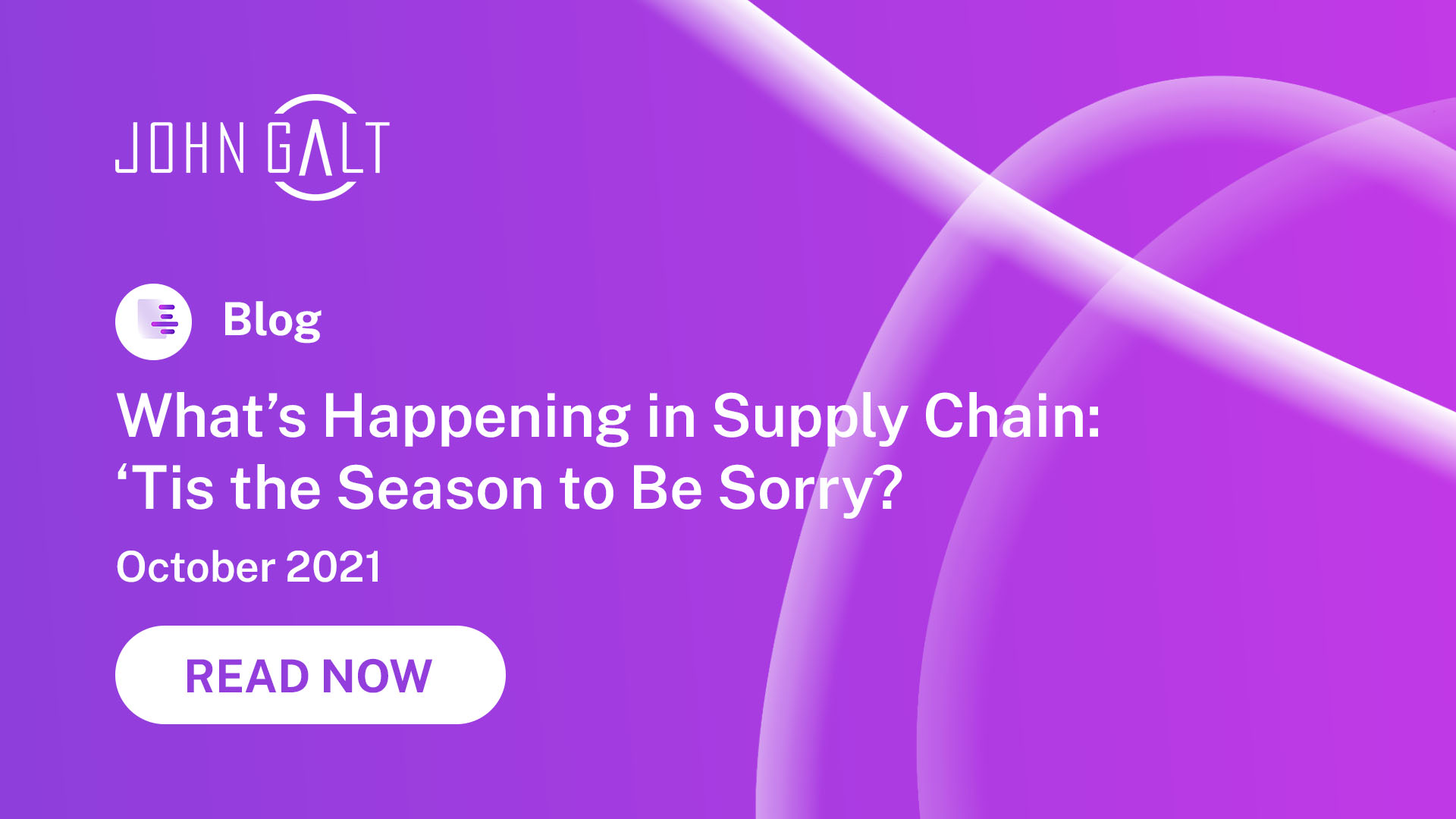It’s supposed to be the first “Christmas after Covid,” but someone forgot to tell Covid that. Sporadic factory operations, labor shortages and container ships parked outside US ports like commuters queueing at a Vermont Starbucks, an epic struggle is setting up to meet this year’s seasonal demand. While some businesses have made smart planning decisions that will carry them through, others are finding themselves unable to fulfill customer expectations, despite the hottest demand signals in years.
Month after month of Covid surges and one-off catastrophes such as the Suez Canal blockage have whipsawed manufacturers’ outlooks and assumptions. A global system that has geared itself toward efficient “just in time” inventory strategies and quick replenishment processes has experienced shock after traumatic shock, turning international efficiency into devastating unpredictability. Factories across Asia are shorthanded or shut down due to the virus. American front-line workers are a scarce resource due to stay-at-homes. Labor availability is cratering just as the big omnichannel behemoths and delivery services need to hire a massive number of seasonal workers to move goods from docks to warehouses to stores and homes.
Covid outbreaks have hammered ports like Savannah (Source: Atlanta Journal-Constitution. A sign of the economic times: Ships lined up at Savannah port), a place that usually handles as many as 500,000 containers a month, is now experiencing unprecedented backups of 20-plus ships waiting to unload. The giant ports of Los Angeles/Long Beach have a backlog of more than 60 ships at times. Today the cost of a cargo container can run ten times higher than a year ago (Source: Bloomberg. Christmas at Risk as Supply Chain ‘Disaster’ Only Gets Worse.) One mid-size toy company reports roughly $8 million worth of finished goods—enough to fill 140 containers—lies stranded at one factory in mainland China, waiting to be shipped. With industry experts predicting rolling bottlenecks, shortages, and higher prices as far as the eye can see, disruptions are taking an uneven toll on companies.
Fortunately, the pandemic disruptions won’t last forever. There are some encouraging signs that the US and other countries may be entering a final downswing in Covid cases. The supply chain world will recover from its current troubles, but this perilous period has exposed frailties in the finely tuned strategies we’ve adopted over time. From here out we’ll see smart businesses taking aggressive steps to stay on top of a dramatically changing world through highly flexible supply chain planning and better-informed data-driven decision making. This level of wisdom cannot be derived from rules of thumb or conventional guidelines. It can only come from modeling the supply chain to support robust what-if scenario analyses and inventory right-sizing driven by stochastic algorithms instead of biased, gut-level instincts. The new potential for dramatic supply uncertainty must be factored into every capacity plan and production schedule. For companies that have yet to take such steps up the maturity curve there’s never been a clearer mandate for adding the power of AI-driven optimization to your supply chain team’s capabilities. Where and how science should be applied to your specific value chain is a discussion that starts here.


